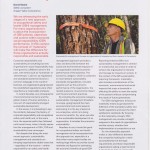
Weeks ago, I had the privilege of writing an article in the May edition of Safety Management, the magazine of the British Safety Council, one of the worldwide leader and most long-established organizations in the field of safety and health. To open the Read More …

 Aragonese
Aragonese English
English Spanish
Spanish